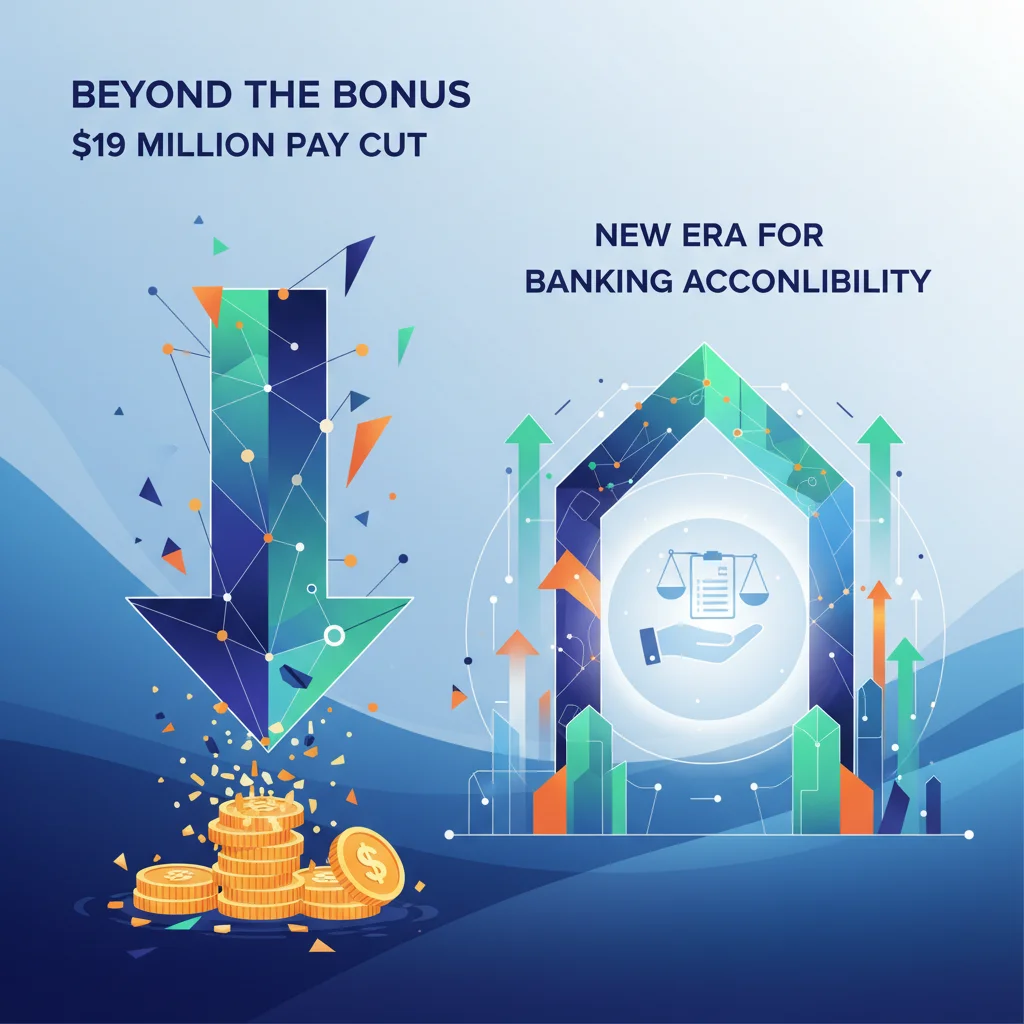
Beyond the Bonus: Why ANZ’s $19 Million Pay Cut Signals a New Era for Banking Accountability
A Multi-Million Dollar Message: More Than Just a Pay Cut
In the world of high finance, numbers tell a story. And the latest story from Australia and New Zealand Banking Group (ANZ) is a compelling one, spelled out with a figure that’s hard to ignore: A$19 million. This is the amount the bank’s board has slashed from its executive bonus pool. On the surface, it’s a direct consequence of costly regulatory settlements and a dip in profits. But dig deeper, and this move reveals a seismic shift in the landscape of corporate governance, investor expectations, and the very definition of accountability in the modern banking sector.
This isn’t just an internal memo or a footnote in an annual report. It’s a public declaration, a response to years of mounting pressure from regulators, shareholders, and a public weary of a “profits over people” mentality. To truly understand the gravity of this A$19 million decision, we need to unpack the events that led to it and explore its far-reaching implications for the entire financial ecosystem, from the stock market to the burgeoning world of financial technology.
The Anatomy of a Scandal: The Bond Deal That Broke the Bank’s Bonus Pool
To understand the “why” behind the bonus cut, we must rewind to 2015. ANZ undertook a significant A$2.5 billion institutional share placement. However, the deal didn’t go as smoothly as planned, leaving the underwriters (including ANZ itself, along with Deutsche Bank and Citigroup) holding a substantial A$791 million shortfall of shares. What happened next triggered a multi-year investigation and a landmark legal battle.
Australia’s competition watchdog, the Australian Competition and Consumer Commission (ACCC), alleged that the banks involved formed a cartel to coordinate the disposal of these leftover shares, a move intended to prevent a sharp drop in ANZ’s stock price. This alleged “cartel conduct” case became one of the most significant white-collar crime cases in the country’s history. While the criminal charges were eventually dropped in 2022, the reputational damage and the subsequent regulatory settlements have cast a long shadow. According to the Australian Financial Review, the legal battle was a significant drain on resources and a source of major corporate distraction (source). The bonus clawback is a direct acknowledgment from the board that such events carry a heavy price, one that must be borne by leadership.
This situation highlights a critical tension in the world of investment banking and trading: the line between strategic market management and illegal collusion. For investors and finance professionals, it serves as a stark reminder of the operational and regulatory risks inherent in capital markets.
Off the Rails: Analyzing the Financial Fallout of Indonesia's China-Backed Bullet Train
Deconstructing the Decision: Accountability by the Numbers
The board’s decision wasn’t just a single cut; it’s a reflection of a “balanced scorecard” approach to executive remuneration, where financial performance is weighed against risk management, conduct, and regulatory compliance. The A$19 million reduction is a clear signal that significant conduct failures will directly impact executive pockets, regardless of underlying business performance in other areas.
To put this in perspective, let’s look at the key factors driving the board’s decision, as outlined in their public statements and the context of their recent performance.
| Factor Influencing Bonus Cuts | Description & Impact |
|---|---|
| Regulatory Settlements | The primary driver, stemming from the ACCC cartel case and other compliance issues. These settlements result in direct financial penalties and significant legal costs. |
| Decline in Profits | ANZ reported a drop in profits, reflecting a challenging economic environment with rising interest rates and slowing growth. Executive pay is often directly tied to profitability metrics. |
| Risk & Culture Failures | Beyond the bond scandal, the banking industry is under scrutiny for its culture. The board is using remuneration as a tool to enforce a culture of accountability and prudent risk-taking. |
| Shareholder Pressure | Post-Royal Commission, shareholders and proxy advisors are more empowered and vocal, demanding boards hold executives accountable for non-financial misconduct. This acts as a powerful external motivator. |
The New Rules of Engagement: Governance in a Post-Scandal World
The ANZ bonus cut is a case study in modern corporate governance. It demonstrates a board exercising its authority to align executive pay with not just shareholder returns, but with broader stakeholder interests and ethical conduct. This reflects a significant evolution in the world of economics and corporate theory, moving away from a pure focus on shareholder primacy towards a more holistic view of corporate responsibility.
This action is a direct consequence of several key trends shaping the global economy:
- Heightened Regulatory Scrutiny: Regulators globally have less patience and sharper teeth. Fines are larger, and they are increasingly focused on individual accountability.
- Shareholder Activism: “Say on Pay” votes are no longer a rubber-stamp exercise. Institutional investors and proxy advisors are scrutinizing remuneration reports and are not afraid to vote against them, creating significant reputational risk for boards.
- ESG Integration: The “G” in ESG (Environmental, Social, and Governance) is now front and center. A bank’s governance framework, including how it handles misconduct and aligns pay with principles, is a critical factor for ESG-focused investors.
For business leaders in any industry, the lesson is clear: the definition of “performance” has expanded. It’s no longer enough to just hit financial targets. How you achieve those targets—your company’s culture, its risk management framework, and its standing with regulators—is now an explicit and financially material part of the equation.
One Wrong Photo: The Hidden Costs of Media Errors in the High-Stakes World of Finance
From Mainframes to Blockchain: Can Technology Prevent the Next Scandal?
While governance and culture are human-led initiatives, technology has a crucial role to play in building a more resilient and transparent financial system. The rise of financial technology, or fintech, offers powerful tools to mitigate the risks that led to ANZ’s troubles.
This is where “RegTech” (Regulatory Technology) comes in. Advanced algorithms can now monitor trading activities and communications in real-time, flagging suspicious patterns that might indicate collusion or market manipulation far earlier than a traditional human audit. Imagine a system that could have automatically flagged the unusual communications between traders at different banks, escalating the issue before it became a full-blown scandal.
Furthermore, technologies like blockchain offer the potential for an immutable, transparent ledger for certain types of financial transactions. While not a silver bullet, the principles of decentralization and cryptographic verification that underpin blockchain could fundamentally reshape post-trade settlement and clearing processes, reducing the potential for opaque, back-room dealings. The integration of sophisticated financial technology is no longer just about efficiency; it’s a core component of a modern bank’s risk and compliance framework.
What This Means for You: Investors, Professionals, and the Broader Economy
The ripples from ANZ’s decision will be felt across the stock market and the wider economy. For investors, it’s a complex signal. On one hand, it’s an admission of serious past failures. On the other, it’s a strong indication that the current board is serious about cleaning house and enforcing discipline—a positive sign for long-term health. An accountable leadership team is a prerequisite for sustainable investing.
For finance professionals, this signals a cultural shift. The “win at all costs” mentality is being actively punished. The path to a successful career in banking will increasingly require not just financial acumen but an impeccable ethical record and a deep understanding of the regulatory environment.
Ultimately, ANZ’s A$19 million bonus cut is more than a financial penalty. It’s a symbol of a banking industry at a crossroads, forced to reckon with its past while navigating a future defined by intense scrutiny, technological disruption, and a new social contract that demands accountability from the very top. It’s a costly lesson, but one that could pave the way for a more stable and trustworthy financial system for all.
The £303 Billion Powerhouse: Why Britain's Self-Employed Are the Economy's Unsung Heroes


